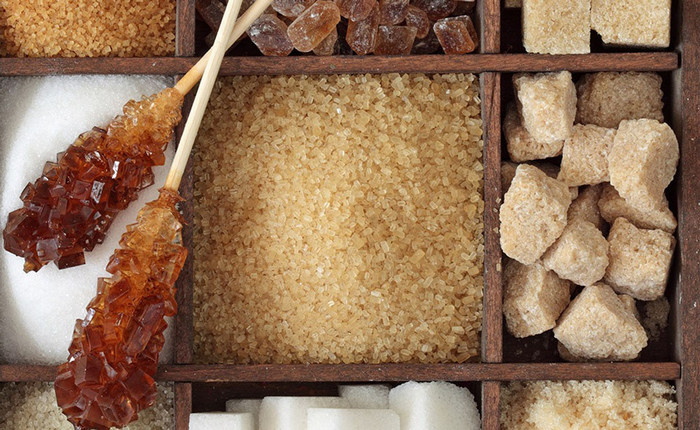By getting too much energy - from fat or carbohydrates, including sugar - you put on weight. If this trend is not kept under control, the risk of lifestyle-related diseases increases. Diabetes, cardiovascular disease and certain types of cancer, for example, are especially dangerous for overweight people. With this in mind, the World Health Organization (WHO) recommends that adults and children limit their intake of "free sugars" to 10% of their total daily energy intake. It is best to keep this figure even lower - 5% will give you additional benefits.
How Much Sugar Should You Eat Per Day?
The AHA suggests an added-sugar limit of no more than 100 calories per day (about 6 teaspoons or 24 grams of sugar) for most women and no more than 150 calories per day (about 9 teaspoons or 36 grams of sugar) for most men. [
source]
01. Free sugars are classified into monosaccharides (such as glucose) and disaccharides (sucrose, or table sugar). They are added to foods and beverages by the manufacturer. In addition, the same two types are also present in natural products - for example, in honey.
02. Monosaccharides and disaccharides are different from the sugar found in fresh fruits and vegetables. There is no scientific evidence that the consumption of these sugars leads to health problems. Thus, the WHO recommendations do not apply to fresh fruits and vegetables - eat them as much as you like.
03. For a person of average build, it will be enough to consume 25 grams of sugar a day. This is about 6 teaspoons. Needless to say, it would be nice to keep this figure at a lower level? And the WHO recommendations, on the contrary, are constantly violated. 59% of Australians regularly consume more than 56 grams of sugar per day. The situation is about the same in America. In Russia, the situation is no better: the average citizen consumes about 40-50 grams of sugar a day.
04. Most sugar (about 75%) comes from processed and prepackaged foods and drinks. The rest we add to tea, coffee and products that we prepare ourselves.
05. The largest share of free sugar consumption falls on sugary drinks. One 600 ml bottle provides the body with a loading dose of 40-70 grams of sugar. This is where this burst of energy comes from right after a can of soda.
06. Sugar added to food and beverages can have different names. Read the labels carefully so you don't get trashed. Here are the things to watch out for: sucrose, glucose, corn syrup, maltose, dextrose, unrefined sugar, cane sugar, malt extract, fruit juice concentrate, molasses.
07. Try to eat fewer high-sugar foods. Cut back on sweets such as chocolate and hard candy, cakes, cookies, sweetened soft drinks, liqueurs, fruit drinks, and sports drinks. Cutting back on sugar for two weeks will help your body feel significantly better.








No comments:
Post a Comment